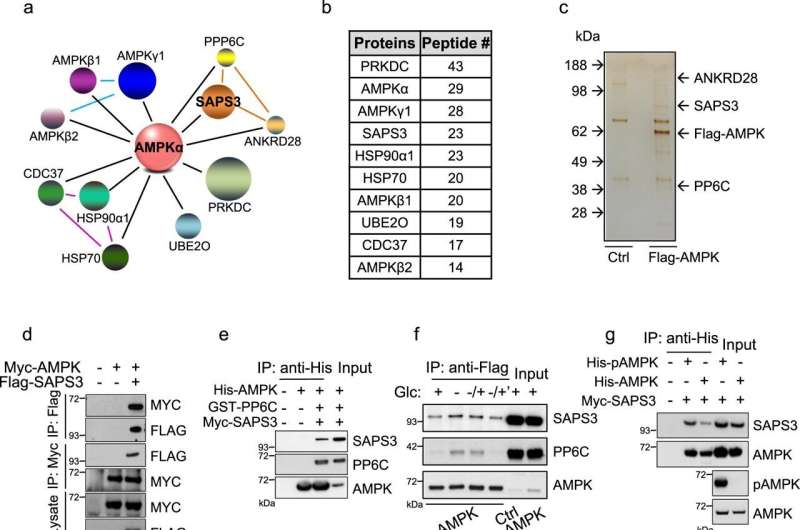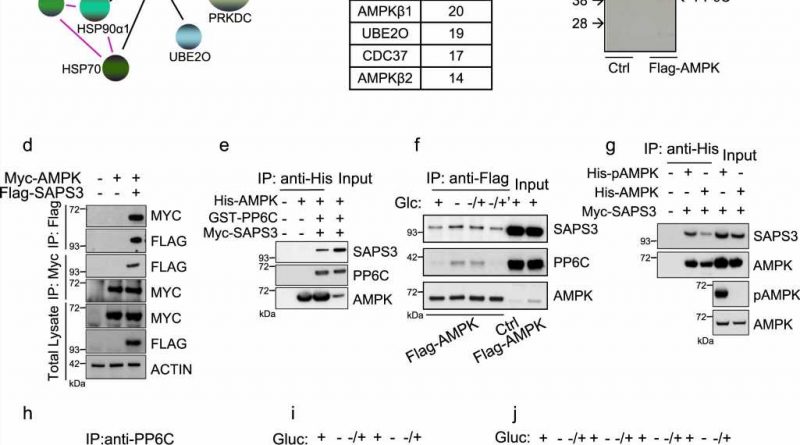Study shows how to prevent a high-fat diet from throwing metabolism out of whack

Eating lots of fats increases the risk of metabolic disorders, but the mechanisms behind the problem have not been well understood. Now, University of California, Irvine biologists have made a key finding about how to ward off harmful effects caused by a high-fat diet. Their study appears in Nature Communications.
The UC Irvine research centered on a protein complex called AMPK, which senses the body’s nutrition and takes action to keep it balanced. For example, if AMPK detects that glucose is low, it can boost lipid breakdown to produce energy in its place. Scientists have known that consuming high amounts of fat blocks AMPK’s activity, leading the metabolism to go out of balance. However, until now, how cells block this mechanism has not been widely examined, especially in live models.
The UCI biologists decided to investigate, believing an AMPK component called SAPS3 serves a significant role. They eliminated SAPS3 from the genome of a group of mice and fed them meals with a 45% fat content. The results were startling even to the research team.
“Removing the SAPS3-inhibiting component freed the AMPK in these mice to activate, allowing them to maintain a normal energy balance despite eating a large amount of fat,” said Mei Kong, professor of molecular biology and biochemistry, and the study’s corresponding author. “We were surprised by how well they maintained normal weight, avoiding obesity and development of diabetes.”
The discovery could eventually lead to a new way to approach metabolism-related conditions. “If we block this inhibition activity, we could help people reactivate their AMPK,” said first author Ying Yang, a project scientist in the Kong lab. “It could help in overcoming disorders such as obesity, diabetes, fatty liver disease and others. It’s important to recognize how important normal metabolic function is for every aspect of the body.”
The researchers are working on developing molecules that could inhibit SAPS3 and restore the metabolism’s balance. They plan to next study SAPS3’s role in other conditions with disturbed metabolic systems, such as cancer and aging.
The discovery comes as metabolic-related diseases such as obesity and diabetes continue to rise. More than half of the global population is expected to be overweight or obese by 2035, compared to 38% in 2020, according to the World Obesity Federation. The number of people worldwide with diabetes is expected to rise to 578 million by 2030, up 25% from 2019, reports the National Center for Biotechnology Information.
More information:
Ying Yang et al, SAPS3 subunit of protein phosphatase 6 is an AMPK inhibitor and controls metabolic homeostasis upon dietary challenge in male mice, Nature Communications (2023). DOI: 10.1038/s41467-023-36809-1
Journal information:
Nature Communications
Source: Read Full Article



